When most people think of travelling around the world, some of the names often heard include Thailand, France, Japan, Egypt, Spain, Germany, Australia etc.
These are the places we naturally think of as the "go-to" spots for travelling.
However, what if I told you about a place just as incredible as any of these locations, yet massively overlooked due to its overall size?
Well, the incredible country of Croatia is exactly that.
Home to sandy beaches, amazing local foods, wonderful culture, and adventurous National nature parks, anything you'd possibly imagine is right here in Croatia.
In this comprehensive guide below, I'll go over all of the different and essential parts of your trip.
We'll get into some of the boring stuff like visa information, currency conversions, and overall travel restrictions due to the recent pandemic.
Yep, that crappy stuff that needs to be dealt with.
However, we'll also get into a shed load of fun things. You'll learn about the national parks and heritage sites, the process for getting your apartment or a luxury villa, some of the different types of foods and wines available, and so much more!
Whether you've never heard of Croatia until today, been interested in going but never had the chance, or are already a fan of the country but want to learn a bit more, you've come to the right place.
Welcome to Croatia, the land of a thousand islands!

Welcome to Novalja! Dobra došli!
General Information
Read this next: The Ultimate Guide to Holidays in Novalja
Where is Croatia?
Croatia is located in Central Europe and is considered a Mediterranean country.
Croatia is bordered by the Adriatic Sea to its west and neighbours itself with Hungary, Slovenia, Bosnia, Serbia, Montenegro, Herzegovina, and Italy.
It shares the longest sea border with Italy while sharing the longest land border with Bosnia.
How Safe is Croatia?
Croatia is considered an extremely safe country. It is ranked the 45th country in terms of total crimes, with only 100,000+ crimes happening per year.
This is compared against the 12 million crimes that take place in America per year (over 117 times more).
To avoid any chance of theft, always be aware of your surroundings and never leave your belongings unattended.
Be aware that certain very remote areas in the country are known to have some land mines present.
Generally, these areas are blocked off, however, you should avoid any non-tourist rural area if possible.

Local Police Station: Novalja
General Weather Conditions
Croatia, depending on the location, has three entirely different and distinct climate conditions, each of which requires different attire.
These include the inland climate, the Mediterranean climate, and the mountainous region climate.
The country's Mediterranean climate runs along its coasts as well as its various islands. There, you can expect the summer seasons to be sunny, dry, and hot.
The winters, on the other hand, will generally be fairly mild and rainy.
The weather along the southern region of Dalmatia is normally regarded as being drier when compared to the northern region of Istria. Temperatures can fluctuate up to 40℉ (5℃).
During the summer, average temperatures are generally around 22℃ (72℉).
However, throughout July and August, temperatures can reach upwards of 30℃ (86℉), making it quite hot during the summer's peak.
Throughout the winter months, the average temperatures sit around 10℃ (50℉), with January being the coldest month of the year.
The winter sea temperatures will often sit around 12℃ (54℉). This is a fair bit of a shift from its much warmer 25℃ (77℉) during the summer.
Compared to the country's coastal areas, Croatia's inland temperatures can be quite varied. While the summers can be just as hot, 22℃ (72℉), its winters can be quite brutal, 4℃ (40℉).
During these summer months, the weather is quite hot and dry while its colder months are cold and wet.
Read this next: Understanding the Bura Wind in Croatia
The Croatian Time Zone
Croatia is on central European time (CET).
This puts it in the same time zone as the majority of Europe as well as a few North African countries. Some of these countries include France, Spain, Germany, the Czech Republic, Tunisia, Algeria, and Monaco.
CET runs one hour ahead of Greenwich Mean Time (GMT) and six hours ahead of Eastern Standard Time (EST).
Daylight Savings
During Daylight Savings, time is moved ahead an additional hour. This puts it two hours ahead of GMT and seven hours ahead of EST.
Daylight Savings begins on the last Sunday of March and goes until the last Sunday of October.
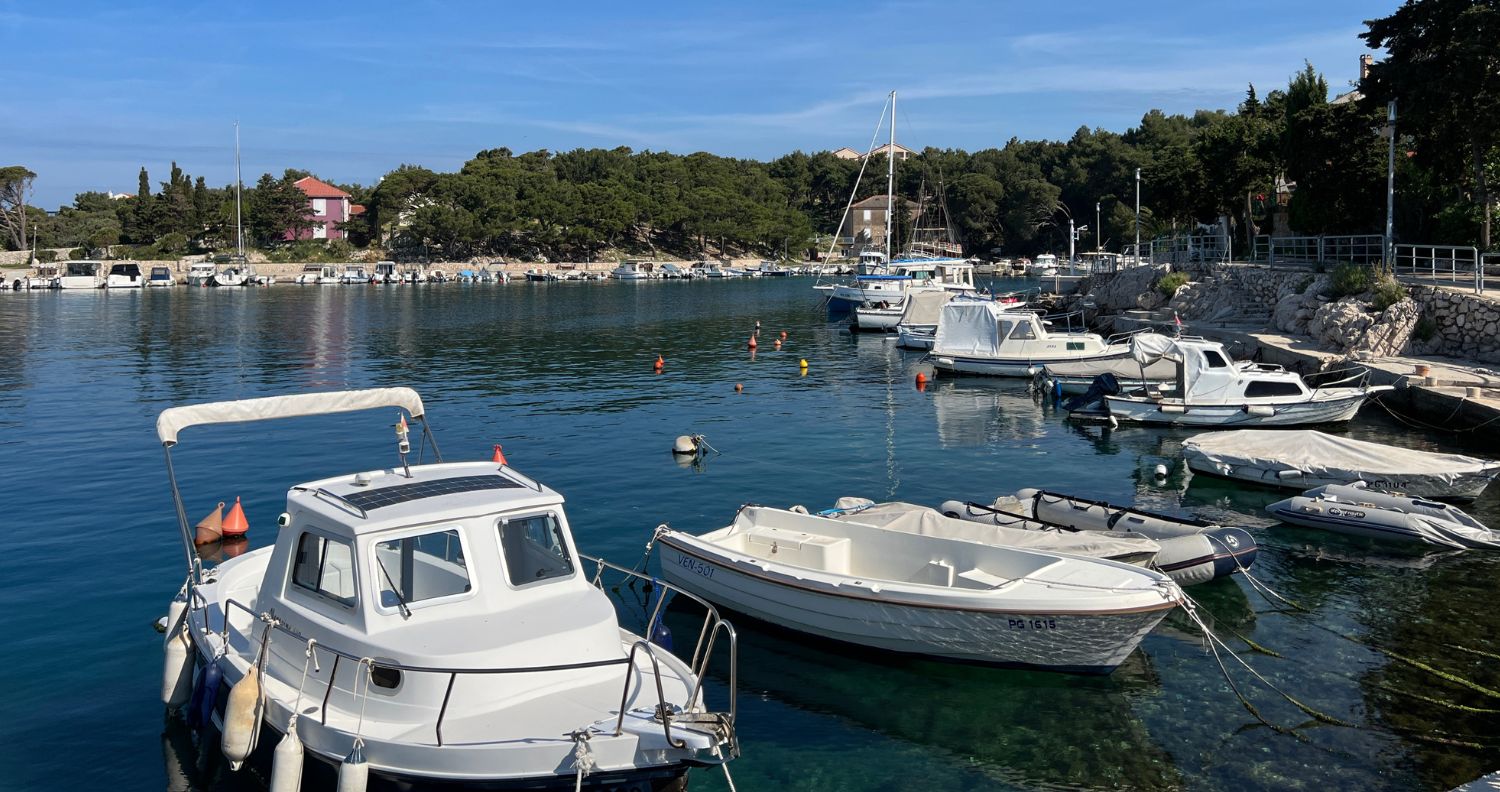
Read this next: What are The Best Clubs on Zrće Beach?
What Language is Spoken in Croatia?
While it is ideal to know some Croatian, it isn't necessary most of the time.
Most locals speak another language at least at the conversational level, with most knowing some English.
The level of language skills in this area of the World is exceptionally high.
In addition to English, many Croats also speak German and Italian.
Travel Information
Acquiring a Visa
Based on where you are coming from, you may not even need a visa to enter the country at all.
Locations like the EU Schengen Area, the United Kingdom, the United States, Canada, Australia, and New Zealand can all enter the country without a visa.
Instead, these foreign visitors can stay for up to 90 days in the country within 180 days while only presenting a valid passport.
Citizens from the EU can enter Croatia simply through their national ID card for the same period.
If you currently own or carry a valid Schengen visa, Cyprus visa, Romania visa, or Bulgaria visa, you will not be required to complete a Croatian visa and can enter the country freely so long as you are coming from one of the aforementioned locations.
Applying For A Visa
For those that do require a Croatian visa, you can print out the application form HERE to fill out and submit to the Croatian Embassy.
You can also submit it to a consulate as well as any accredited tourist agency.
To apply, you must have a passport issued no later than 10 years ago, and it must have an expiration date no sooner than three months after your departure date.
Getting Travel Insurance
Travel insurance is an important addition while travelling and ensures you are covered if anything happens during your trip.
This can range from refunding a cancelled trip to reimbursing lost luggage or missing items, to covering any medical emergencies incurred while travelling.

Novalja Medical Centre
Read this next: 5 Awesome Croatian Lunch Dishes
Medical Insurance
EU citizens are automatically covered by way of their European Medical Insurance Card. This covers all basic medical emergencies an EU citizen may suffer during their trip.
It does not, however, cover transportation-based emergencies, such as lost luggage or a cancelled flight.
For non-EU citizens, it is advised that you check with your specific embassy to see what level of care is provided for while in Croatia.
Because each country's relationship and agreements vary, so too is the level of medical coverage offered.
Travel-based Insurance
For all other travel-based insurances, you'll want to go online and compare different options.
Travel insurance, while not a requirement, is highly encouraged in case of lost or stolen goods, a cancelled flight, or other potential mishaps that may happen while on your trip.
Money & the Croatian Currency

Read this next: When is the Best Time to Visit Croatia?
Please note: As fromJanuary 1st the Euro (€) will be replacing the Croatian Kuna
Exchanging Money
As mentioned above, it is ideal that you use the Kuna over euros.
Many local establishments will not take it, and of those that do, you will get your money back in Kuna and likely at a loss.
Some establishments that will accept euros include tourist restaurants and hotels, toll-roads, and petrol stations.
The most sensible place to exchange your money is at an exchange office. Keep in mind that, while many of these offices will advertise a "no commission policy," they can set their exchange rates.
Just for an example, during the summer of 2020, these exchange rates varied anywhere from 7,2 Kn per Euro to 6,5 Kn per Euro!
When you consider that the official exchange rate set by the Croatian National Bank is 7,5 Kn per Euro, you can see how important it is to inspect where you go and what they are offering.

Novalja PDZ Bank
Using ATMs
When using an ATM, you ideally will want to use an official bank's machine.
These ATMs will be near most branch offices and will generally have the lowest withdrawal fees. These include PBZ, Erste, Zagrebacka, Privredna OTP, or Addiko Bank.
Most hotels and resorts will have either a Euronet or an Auro Domus ATM.
These can be quite expensive to pull from and should only be used if you feel the convenience is worth the expense.
Euronet ATM fees can vary massively, and do not remain the same. In addition, some have noted that they can charge an additional fee on top of every transaction.
I would go as far to say steer clear of these machines as they are designed to be purposely misleading.
This is not the case for ATMs from official Croatian banks at branch offices, where transactions do not have a fee.
Using Credit Cards
As in many other parts of Europe, credit cards are not widely accepted in every part of the country and are mostly used in hotels and tourist-heavy locations.
The majority of businesses prefer cash, with some not accepting cards whatsoever. Even if a business advertises that they use credit cards, always ask and be ready to use cash instead.
If you do end up using your credit card, be aware of what is known as "dynamic currency conversion".
This is the process whereby your sale is converted to the home currency at the point of sale rather than by the card issuer.
Ultimately, this results in you paying more for the product than if you paid using the local currency.
Paying VAT
In Croatia, the Value Added Tax (VAT) is 25% for most products.
For foreigners that are not permanently or temporarily establishing residence in the country, you can seek a refund for any purchase over 740 Kn (€100).
You'll have up to six months to claim your VAT return from the time of the sale. This process includes filling out a tax-free form at the moment of purchase and having it stamped there as well as later at the airport.
You then must mail it back to the shop to get your refund.
The second method is by going to a tax-free service shop. There, you'll similarly fill out the form and have it stamped both there and at the airport. The difference is that the refund process will be faster, with many times it already being at the airport for pickup.
Tourist Information
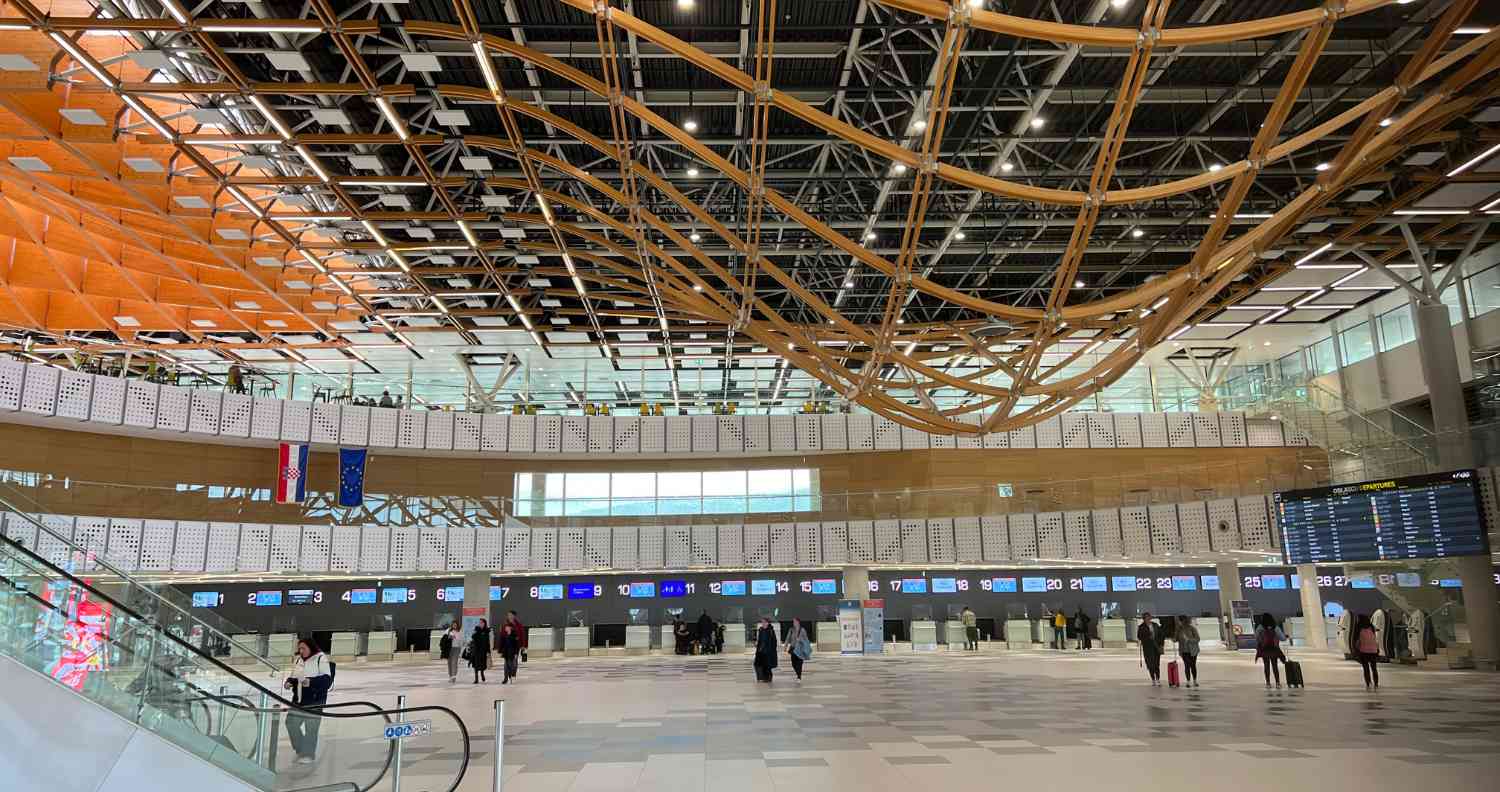
The New Split Airport Terminal
Read this next: Hostels and Camping in Novalja
Getting to Croatia by Airline
No matter where you are coming from, the process for getting to Croatia is surprisingly straightforward.
For those coming from outside of Europe, there is an abundance of flights available at reasonable prices online.
These flights are available to all several major Croatia airports, making the travel experience even more accessible.
Airports Locations:
Zagreb
Split
Zadar
Pula
Dubrovnik
Rijeka
Osijek
If you are in Europe, this process is even easier. Most flights into Croatia, depending on your location, can be direct, greatly reducing any travel time.
A great website to check to use for good tickets is Skyscanner. Not only do they offer excellent rates, but they also are an excellent resource for setting up accommodations at a hotel.
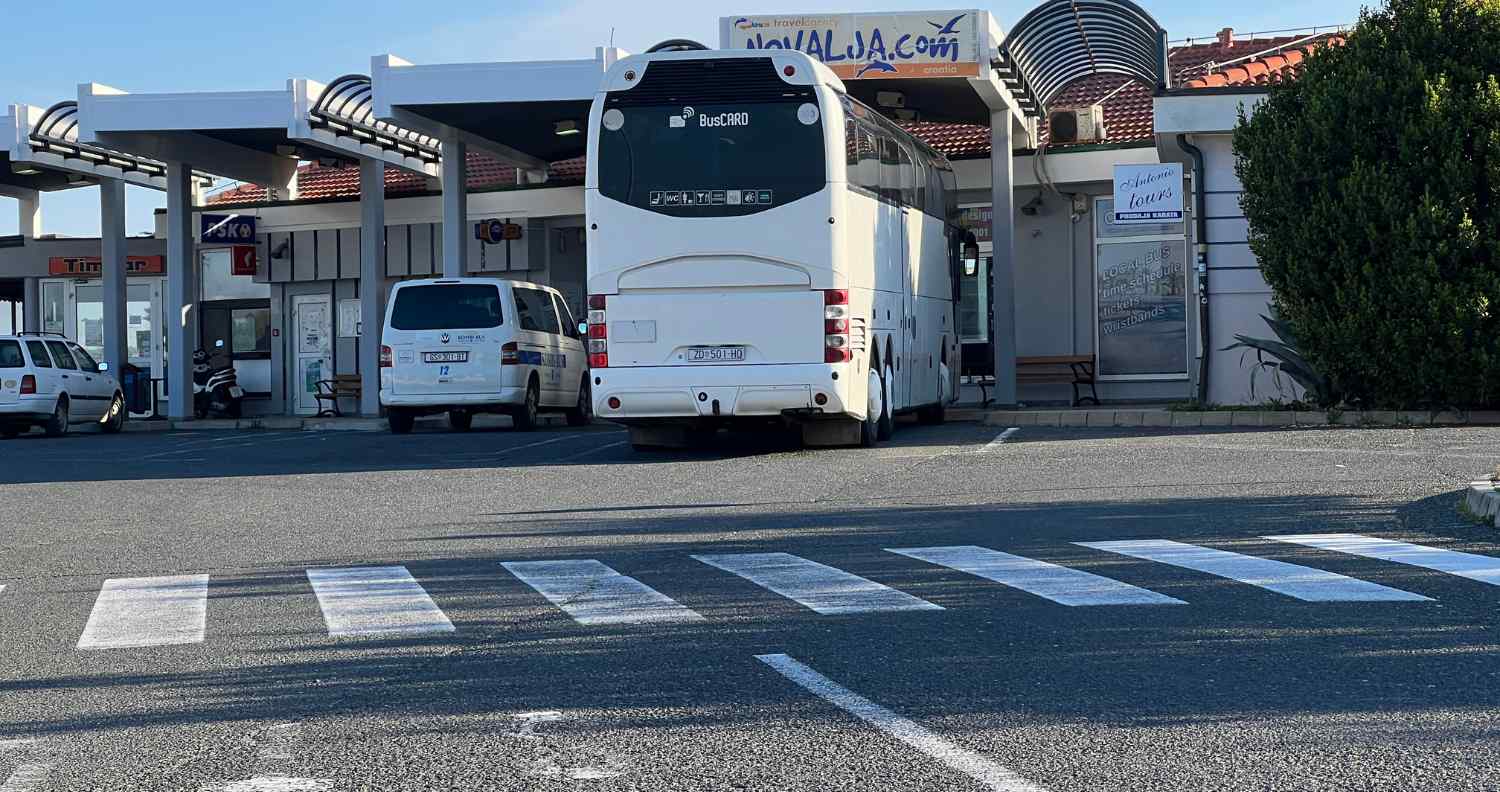
Novalja Coach and Bus Station
Getting to Croatia by Bus
For those travelling throughout Europe to Croatia, you can also go via bus.
This method is a bit more complicated than by air and should only be done if it makes sense commercially.
A great website to use to check out the different bus schedules is GetBybus.
Getting to Croatia by Car
Travel by car is the most ideal way as you have complete control over how much time you spend focusing on driving to your location compared with exploring the various towns and cities while going through Europe.
What to Bring to Croatia
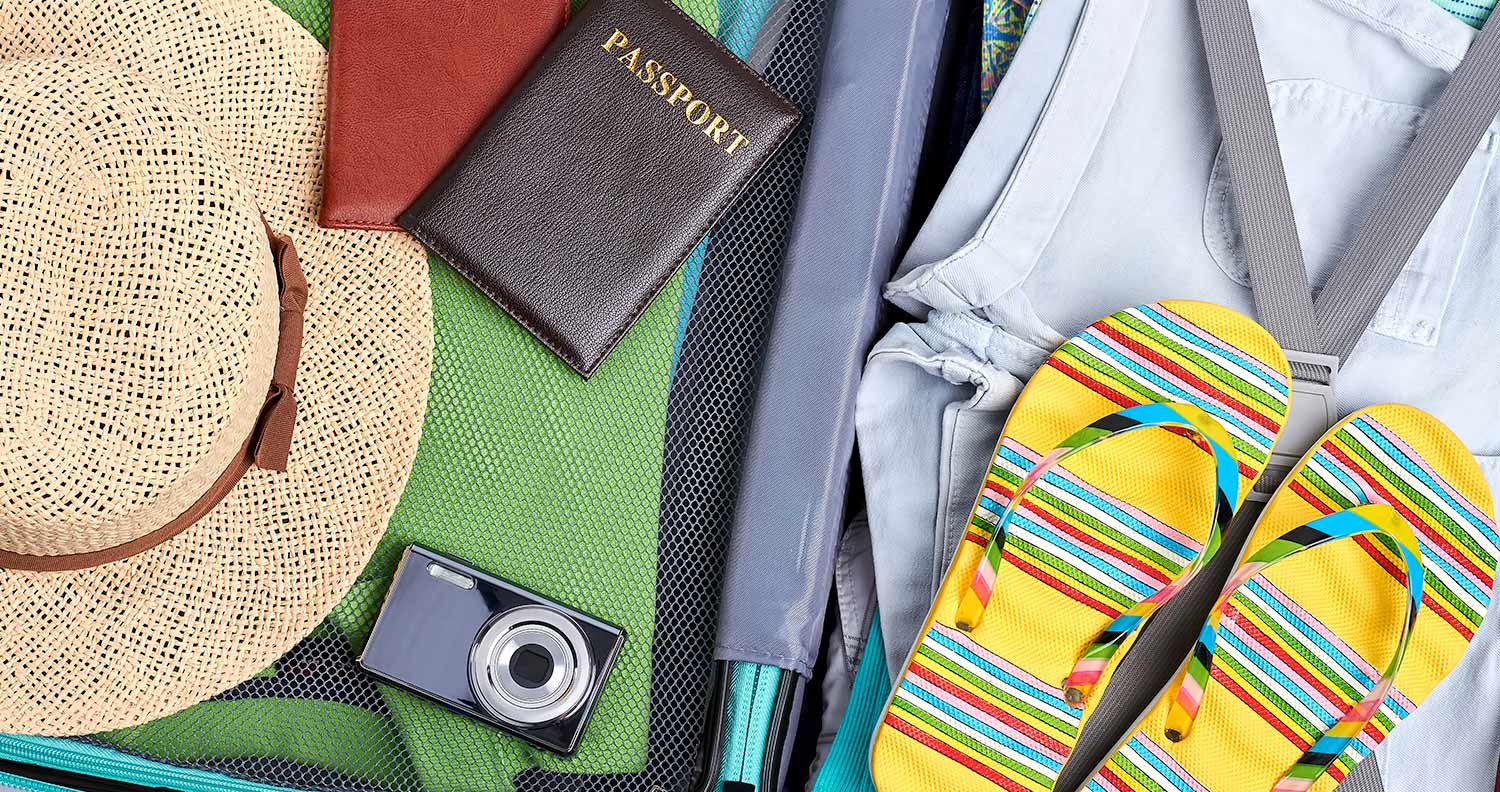
Read this next: Family Things to Do on Pag
While the specifics can vary based on a variety of factors, there are a few key things you'll want to keep in mind when packing your bags for a visit:
Clothing
As the country has three very distinct climates based on what region you're in - Mediterranean, inland continental, and mountainous climates - you'll want to determine when you're going and what areas you'll want to visit.
For example: If you're visiting the country in the summer months, you'll want to bring a lot of thin and light clothes while inland and on the islands.
However, in instances where you'll want to go through some of the more mountainous regions, packing appropriate jackets, adequate footwear and long pants will be advisable.
On the other hand, if you're going during the fall or winter seasons, you'll want some reasonably heavy clothing while travelling inland or through the parks.
As the island areas will remain fairly temperate, you won't want to be in full-on summer beachwear, but a thin windbreaker or leggings will keep you feeling comfortable while trekking through the beaches and islands.
Please, for all seasons, make sure you properly think through your footwear. Footwear is commonly neglected which can certainly lead to problems!
For example, you wouldn’t want to go hiking in flip flops would you?
Gadgets
Outside of clothing, you'll also want to make sure you bring a few different electronic gadgets and devices to make the experience more enjoyable.
Camera: Consider bringing a quality camera to capture all the memories from your trip.
While most phones have high enough quality cameras on them, investing in a solid dedicated camera will ensure you have the best images for your trip.
There are some great options including a DSLR camera, a point-and-shoot camera, or action and mirrorless camera.
These are all great for getting pictures that your phone's camera can't take or can't optimally take (such as underwater or while several feet away).
Unlocked Cell Phone: It's also important that you have an unlocked cell phone.
This ensures you'll be able to use any type of sim card from any country in the world.
If you are coming from outside of the EU there's a good chance your current mobile provider will not work while in Croatia.
Having an unlocked phone means you won't need to purchase a separate phone while in the country, instead simply replacing your sim for a local EU sim available at most petrol stations, post offices, or newsstands.
It really will come in very useful!
Adapters, Chargers, Plugs, and Converters: It's also extremely important that you pack a working charger or adapter. Croatia uses 220V, 50 Hz frequency as well as the European standard "Type C" and "Type F" plugs.
While adapters are great in an emergency, you'll ideally want to invest in a quality converter as these will transform the electrical current used into one that your device is native to.
Important: Be aware that adapters don't change this electrical current and can potentially cause permanent long-standing damage to your device.
Additional Items: In addition, some other useful items you'll want to bring with you include:
Comfortable Walking Shoes
Mosquito Repellent
Motion Sickness Relief
Toiletries Bag
Sandals
Multiple plug adapter
Ear Plugs
Sleeping Blindfold
Travel Pillow
Sunscreen
A Lightweight Suitcase
A Travel Money Belt
Water Shoes
Sunglasses
Microfiber Towel
Hand Fan
How to Get Around the Country

Read this next: Kalypso Club Zrće: It all Started Here in 1987
Croatia, despite its numerous small islands and incredible history, isn't exactly known for its size.
This means that you'll be able to travel through most of the country's sights and locations using standard transportation.
By Car
One of the best ways of getting through the country, cars grant you the ability to leisurely move from town-to-town while not having to follow a bus or tram system.
This is especially great if you're interested in going through and checking out the smaller villages and seeing what they're like.

Novalja is home to some of the best driving roads in Europe
Read this next: Things to do in Zadar: Novalja’s Closest City
By Bus
In addition to cars, one of the most ideal methods of moving throughout the different towns and cities is by bus.
Not only are they constantly running and frequently available, but the buses are also clean as well as an all-around enjoyable experience.
The only times a bus will not be good is for island-hopping.
Outside of that, it is one of the best ways of travelling around Croatia if you don't have a car.
By Public Transport
n addition to cars and buses, public transportation is an excellent method of getting around the larger towns.
Public transport is both efficient as well as reliable.
Most big towns, like Pula, Split, Dubrovnik, and Zadar all use city buses, while Zagreb includes a fully interwoven electrical tram system, making transport even faster.
A ride through town can cost around 15 Kn (€2) per person.
By Taxis & Rideshare
While originally a hefty expense, taxis and cab fares have been forced to become more affordable thanks to Uber.
Since coming to the country in 2015, Uber drivers have been in steady competition for cab drivers and are still one of the cheapest methods of getting a personal driver to take you around the country.
While cabs are available in every town, Uber is primarily only in tourist-heavy towns such as Rovinj, Split, Zadar, Zagreb, Dubrovnik, and several others.
Rideshare schemes and websites are also increasing in popularity, so if that’s your thing, jump online and check your local Rideshare options out

Travelling By Ferry
Read this next: A Guide to Pag Island
By Ferry
The last method of getting around the country is by boat or ferry.
In addition to simply being a relaxing, fast method of hopping from one port to the next, it is actually also the only way of getting to some of the different islands.
The main ferry leaves out of Rijeka, Split, or Zadar; however, small coastal ports from towns like Ploce, Mkarska, Drvenik, Brsecinie, Orebic, or Prapratno are also available.
The largest operator throughout the country is Jadrolinija, with ferries that are found in virtually every port and which cover the vast majority of routes.
While ferries go out almost every time of year, they are most active during the summer months due to a greater interest in island-hopping from tourism.

Newly Developed Ferry Port in Novalja
Tourist Attractions
Tourist Registration
Once you've made it to Croatia, now your journey (and the fun) can officially begin.
Before you can head out or do anything once the landing, you'll need to be officially registered as a tourist.
For EU citizens, this process is fairly straightforward and can be done at any local tourist office or at check in at your accommodation.
If you are a non-EU citizen or visiting from outside of the EU, you'll be required to register at the local police station.
This information will be referenced by any hotel or private accommodation you check into to ensure you are here legally and as a tourist.
When you do check-in, you'll often be required to present your passport or ID card and leave until the following morning.
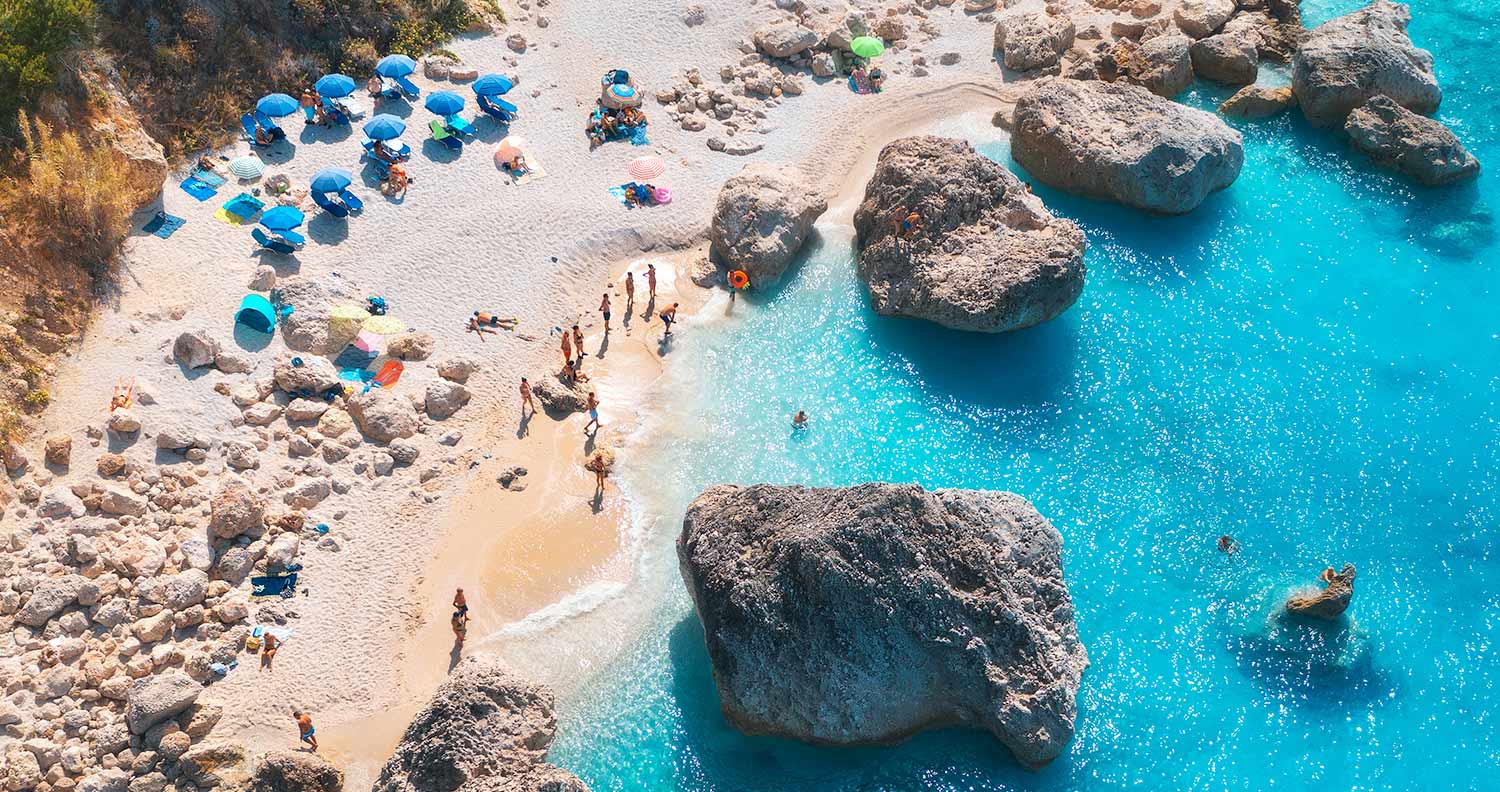
Read this next: Your Ultimate Guide to Zrće Beach
Beaches
Despite there being a lot to do during all seasons of the year, the peak visiting times for tourism is during the summer months.
Why is this the most important time?
Because of the amazing islands, sands, and beaches, of course!
Croatia has well over 6,000 kilometres of beautiful sandy coastlines.
Similarly, the country lives up to its name as the land of 1,000 islands, 1244 to be precise!
As a result, you can be sure to find more than your fair share of fun in the sun while in this Mediterranean part of the world.
Compared to the various sandy beaches we immediately think of from Florida or Hawaii, Croatia sports equally breathtaking rocky pebble beaches.
They are mostly formed from coves and bays.
Because Croatia has the less stereotypical sandy beaches that we all know and love, it results in the water having a clearer and more visually appealing look to it.
This makes it great for snorkeling, scuba and deep-sea diving.
National Parks
One would think that because of the country's small size (just over 56,000 square kilometres) there wouldn't be much to it. Surprisingly, nothing could be further from the truth.
Even disregarding the incredible islands and beaches, the country is littered with some of the most gorgeous and awe-inspiring nature and national parks in the world.
Because of the country's geographical location, ecological conditions, consistent climate, and amazing biodiversity, there are eight national parks, ten nature parks, and two nature reserves.
Nearly 10% of the country's territory is protected, only fostering this amazing lushness and nature-filled wonder.
You'll have the freedom of visiting any of the eight national parks nearly all year-round, as well as the ten nature parks.
Below is just a brief overview of the different national parks and what each offers overall.
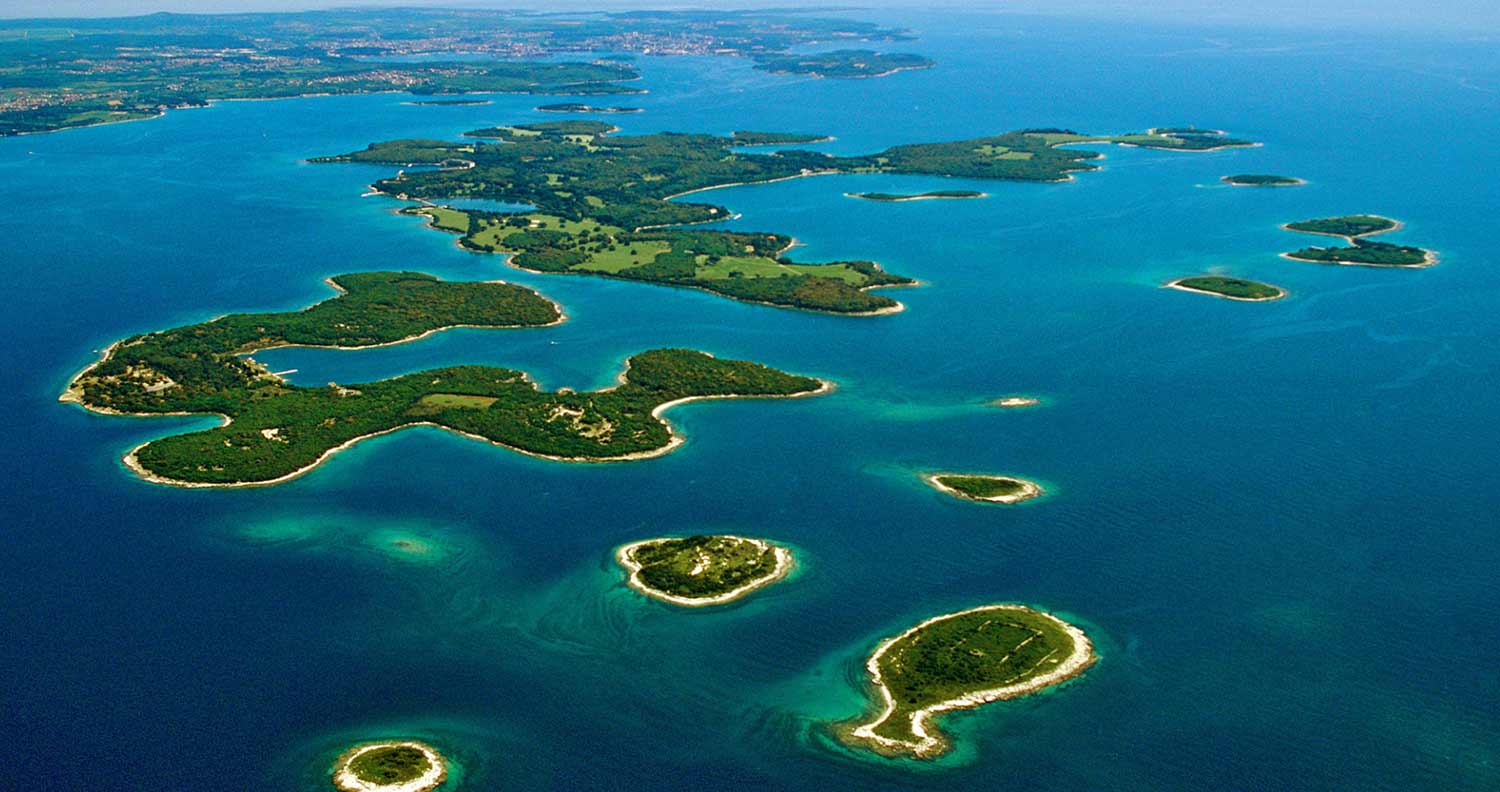
1. Brijuni National Park
Found on the western coast of Istria, Brijuni National Park is reachable from anywhere in the region.
Once on the island, visitors have presented a perfect blend of natural beauty, cultural charm, and historical heritage.
The island offers guided tours as well as the ability to freely cycle and explore on your own.
In addition to its beautiful vistas and incredible nature-filled sights, the park hosts ancient ruins, amazing beaches, and even a museum.
It is one of the most visited National parks and is likely to take up your entire day enjoying.
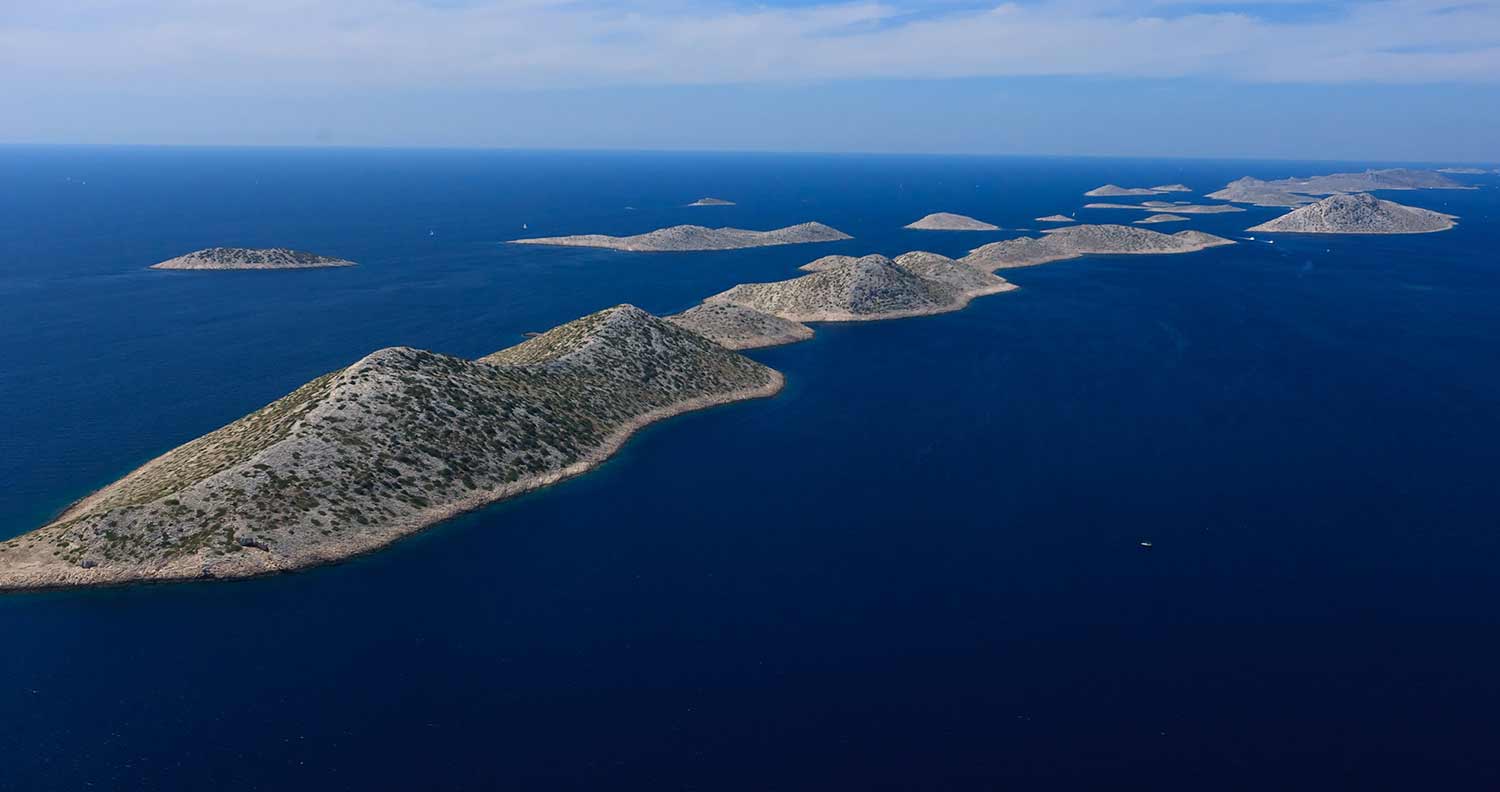
2. Kornati National Park
An amazing archipelago, the Kornati National Park hosts 89 separate islands, islets, and reefs.
It is truly magnificent; so much so, that it has been regarded as one of the most interesting nautical sites in Europe.
The park is almost entirely uninhabited and is great for those interested in sailing, snorkelling, and swimming.
You can also rent out a boat or take a boat tour while on the island.
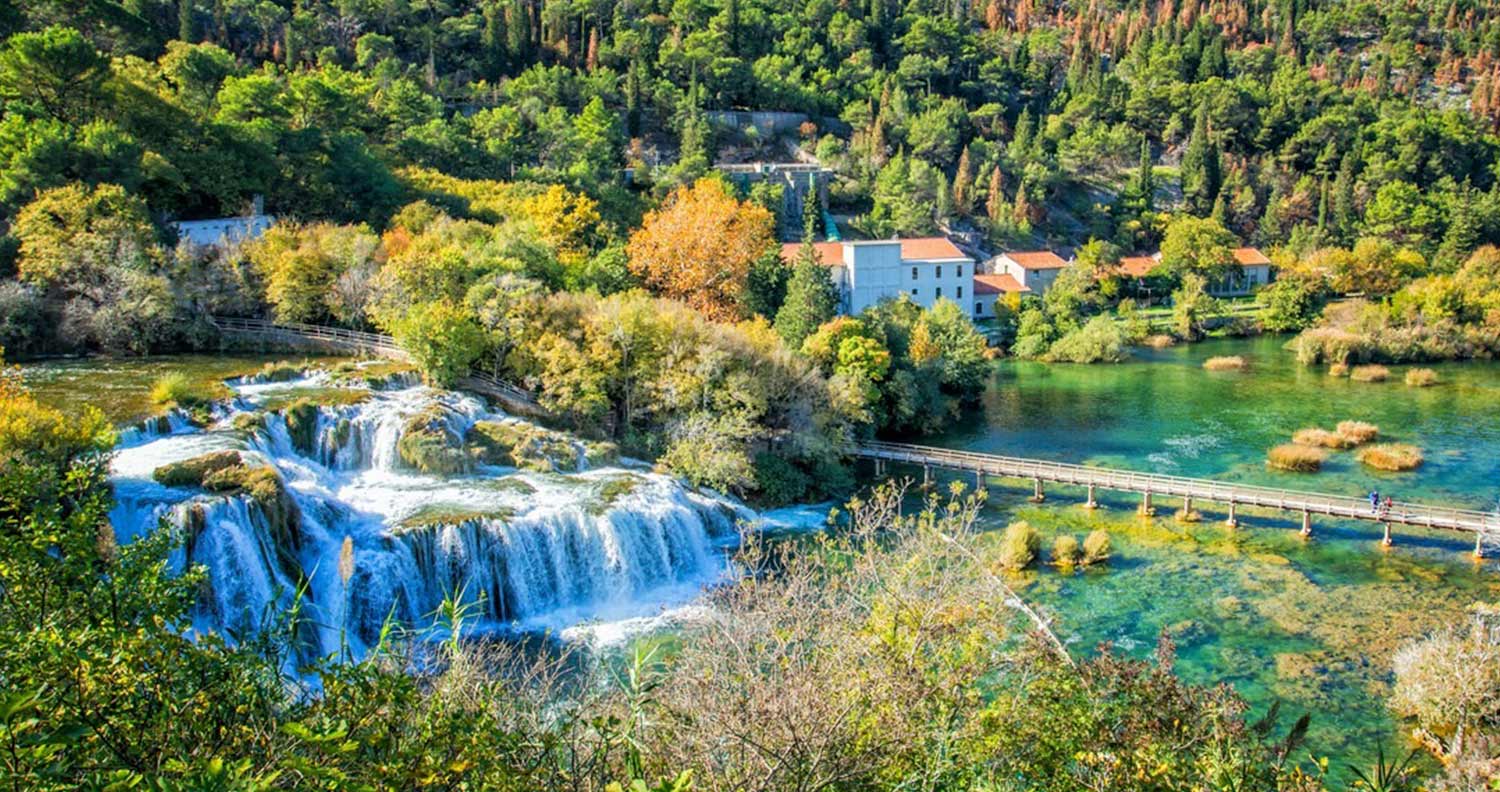
3. Krka National Park
Unlike others on this list, the Krka National Park doesn't keep most of its attractions in one single spot.
Rather, you'll have to drive out from one to the other, especially if you're looking to do them in a single day.
Some of these incredible attractions that make it worth the drive include several high waterfalls as well as the Visovac Island.
Their most famous waterfall is the Skradinski Buk, also considered the largest waterfall in the country.
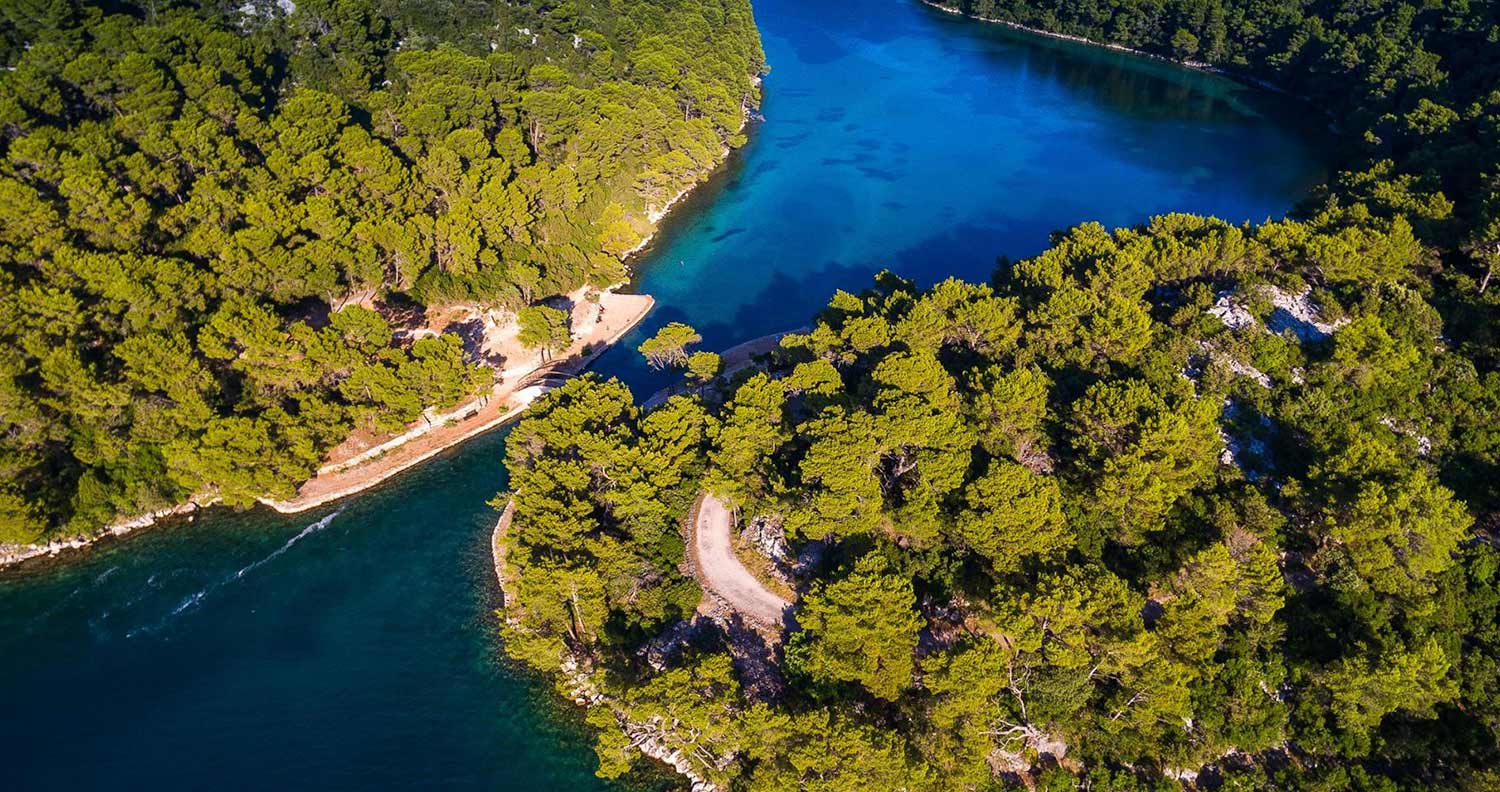
4. Mljet National Park
Located on one of the southernmost islands, Mljet Island, Mljet National Park is a beautiful green realm that spans over 5,000 hectares.
It is home to the Great and Small Lakes as well as the "two sea bays".
Visitors can enjoy cycling, swimming, hiking, and snorkeling.
The island and park are easily reachable via ferry from either Peljesac or Dubrovnik.
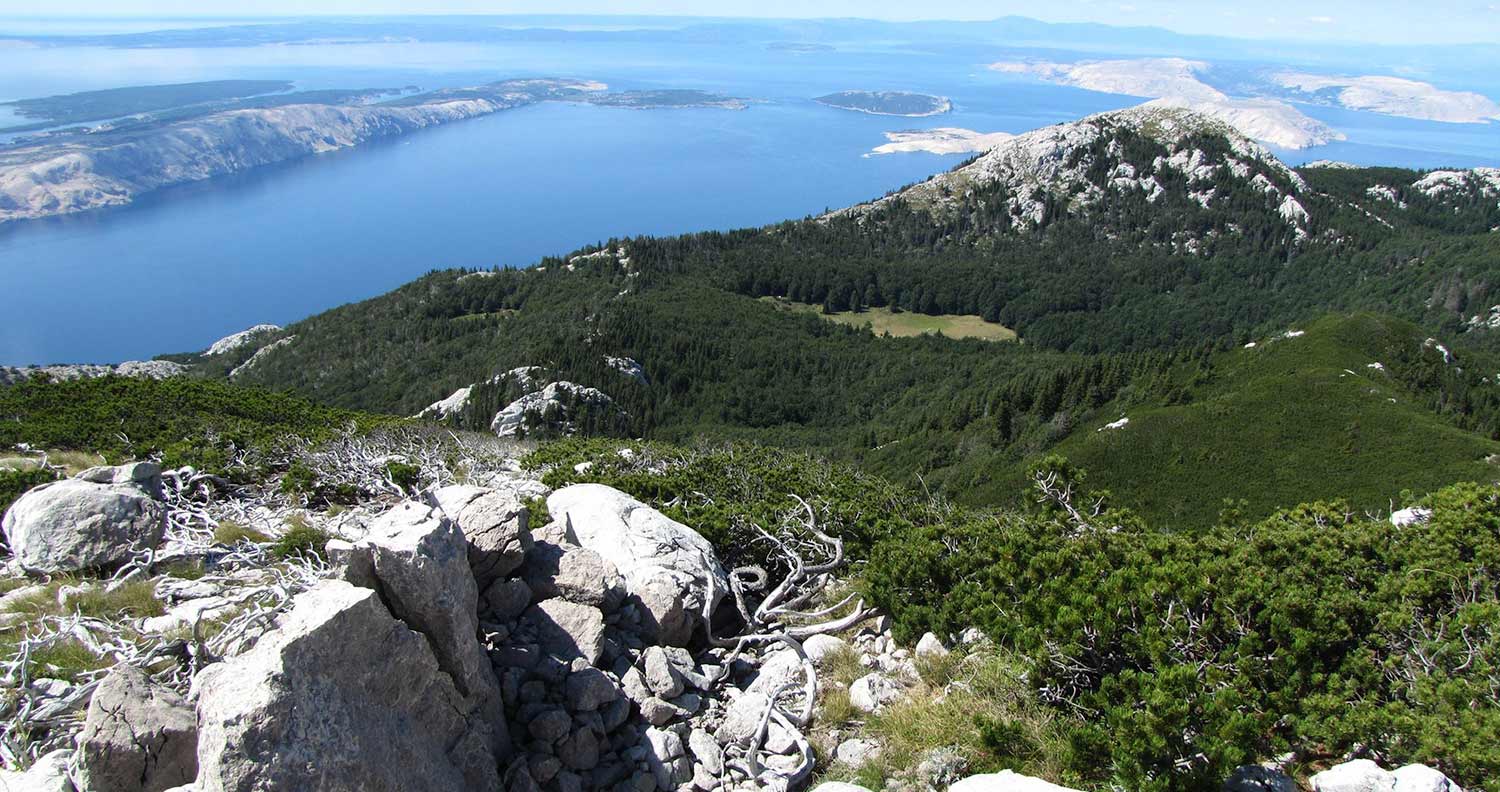
5. Northern Velebit National Park
Also known as "Sjeverni Velebit National Park," Northern Velebit National Park dates back to the late 90s and covers over 100 square kilometres.
It hosts the largest mountain in all of Croatia and is a natural frontier between the continent and the Adriatic Sea.
To visit, you'll only be allowed to go along the designated trail and to visit its various botanical reserves, mountaineering trails, and stone masses.
Many of the trails here range from a couple of hours to all day and should only be performed by someone who has some experience hiking trails.
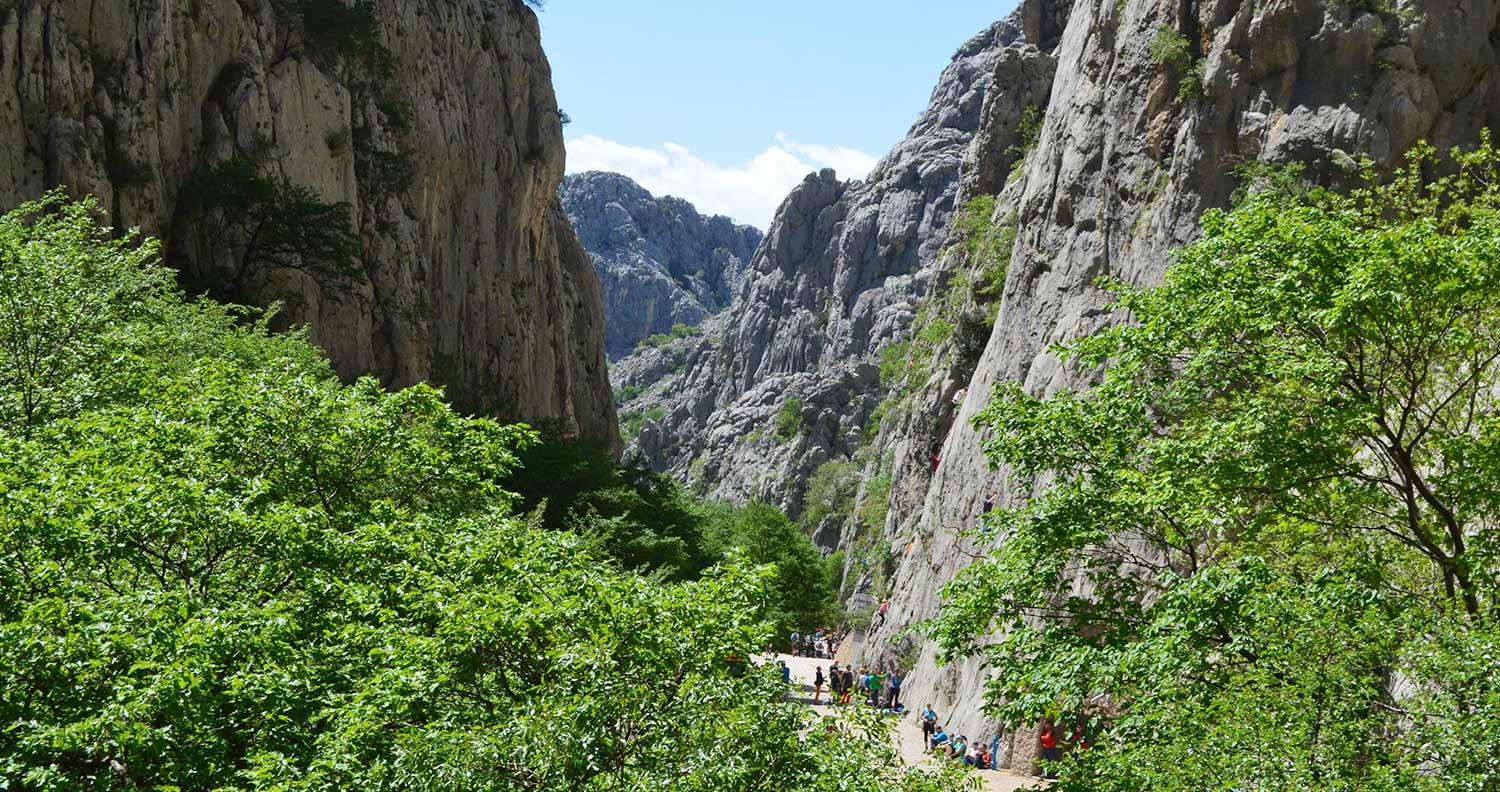
6. Paklenica National Park
Perfect for those that love the outdoors, Paklenica National Park goes well beyond the southern slopes of the Velebit mountain.
It is a great option for those that enjoy mountain climbing, trekking through beautiful and diverse wildlife and flora, or standing amongst breathtaking visual vistas.
Word to the wise: Paklenica is ideally meant for fit hikers and experienced rock climbers.
Nearly all trails are very intense and not for beginners.
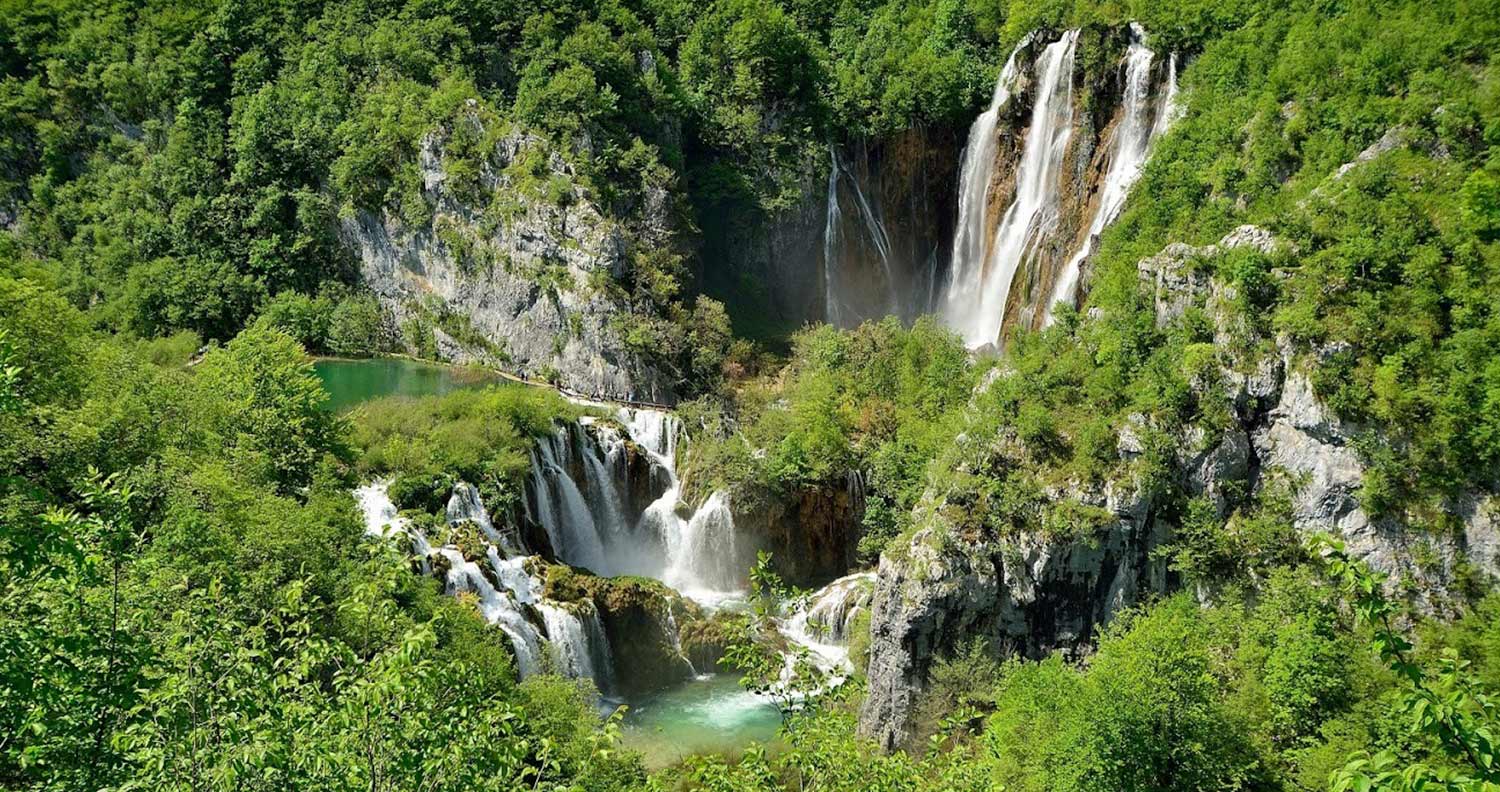
7. Plitvice Lakes National Park
If you're looking to check out the first site to ever receive status as a national park, Plitvice is the park you're looking for.
Given the designation back in the late 40s, Plitvice is also one of the seven UNESCO World Heritage sites.
It is normally quite crowded during the summer months and has some fun and easy hiking trails, ranging between 2 and 8 hours.
While all of these locations should be visited, Plitvice's 16 stunning lakes and waterfalls makes it a veritable "must-see" spot, no matter the crowd size.
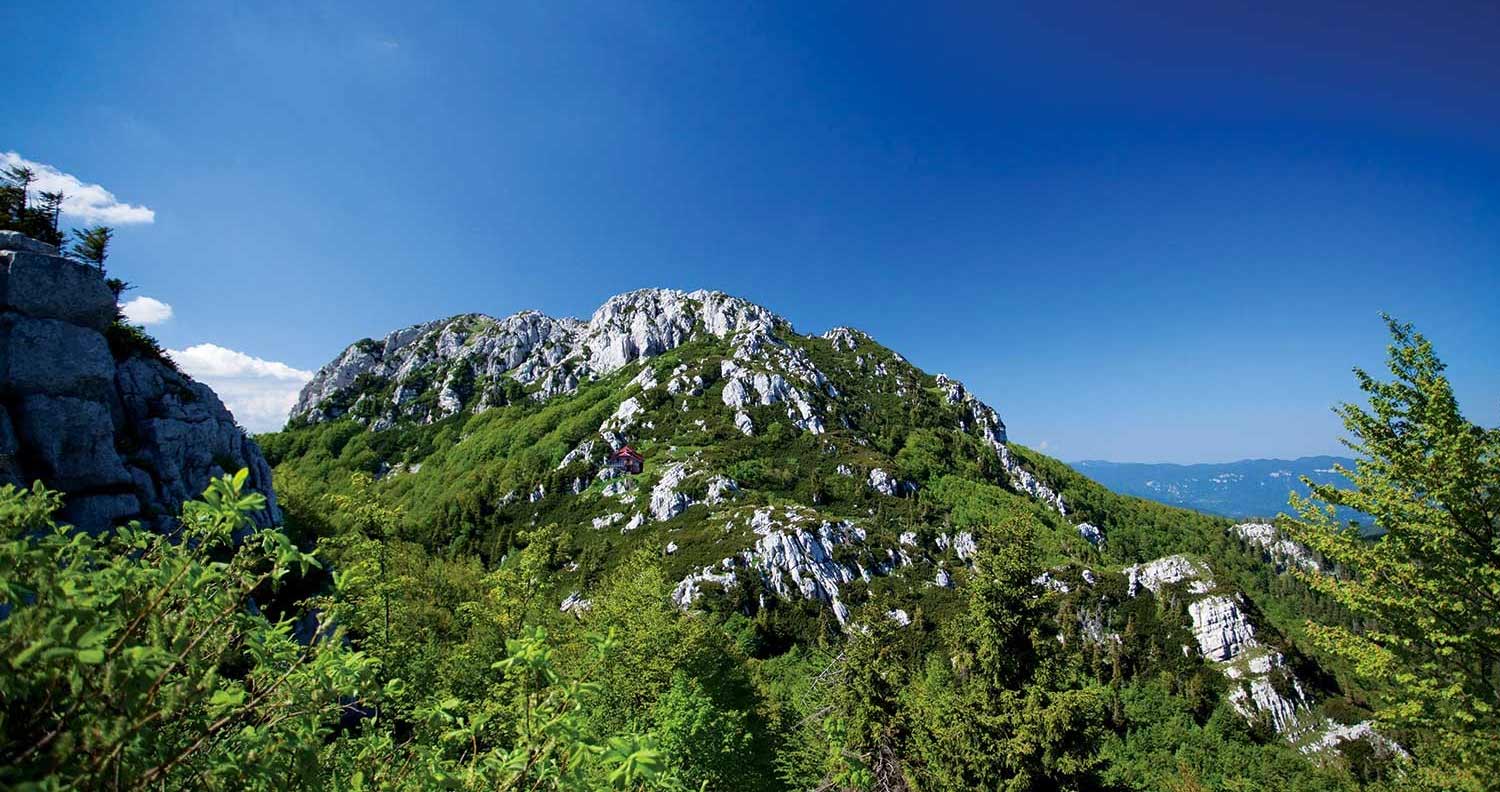
8. Risnjak National Park
Found in the hilly area of Gorksi Kotar in inland Croatia, the Risnjak National Park has beautiful, panoramic mountain views, strikingly dense forests, and a small variety of different mountain trails to use.
It is the perfect place to escape the intense heat from the summer sun and is also home to Mt. Risnjak, a 1528 metres mountain that sits atop inspired vistas over the sea.
It is one of the least visited parks, meaning that those who do visit will have the entire area largely to themselves
Read this next: Croatia National Park Visitors Guide
UNESCO World Heritage Sites
In addition to the many incredible national parks, you can also visit one of the ten UNESCO World Heritage Sites.
Shopping for Groceries and Essentials

Read this next: 5 Fantastic Coffee Places in Novalja
Supermarkets
All regions of Croatia are serviced by an array of domestic and international supermarkets.
For example, visitors to the town of Novalja have access to an astonishing seven major supermarkets! And remember, Novalja is a fairly small island resort.
Popular supermarkets in Croatia include:
Plodine
Tommy
Konzum
Interspar
Lidl
Eurospin
Kaufland
These supermarkets are also supported by an army of smaller grocery shops, such as Bakmaz which you will find all over Croatia!
Shop locally in Novalja
Shopping Markets
Croatia may not seem like it, but, in addition to its incredible beaches and foods, it also produces highly regarded artisan products. These include olive oil, cheeses, honey and other market products.
You should find that most Croatian towns have a regular market where you will be able to find these types of things alongside fresh fruits, vegetables and flowers.
Just ask some of the locals, they will tell you when and where they run from.
Local markets usually operate in the mornings, so set your alarm clock and don’t be too hungover!
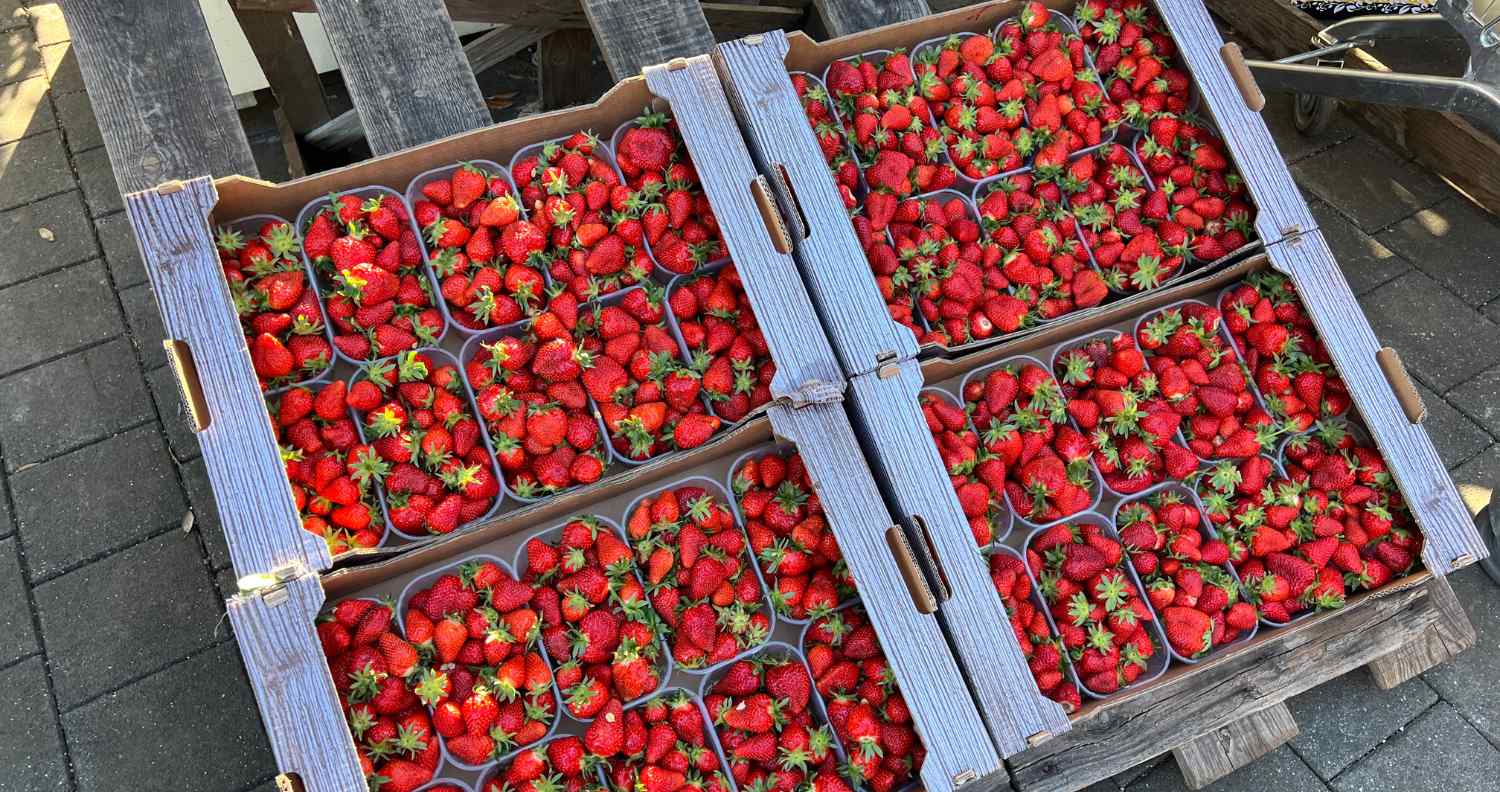
Farmers market Novalja
Read this next: You’ll ADORE these Fabulous Fish Restaurants
Fresh Fish on the Quayside
f you are staying on the coast or on one of the islands and you are using your own kitchen facilities at your holiday accommodation, you really should give this a culinary whirl!
Many of the coastal towns usually have a small fishing fleet that supply fresh fish to the local markets, residents and restaurants.
Many of these fishermen also sell the fish that they have only just caught, on the quayside as soon as they return to port.
It is an early start and the best plan of action is for you to pop down to the quayside around 7am where you will soon see the fishermen selling their latest catch.
It really is worth it!

Fresh Fish Daily in Novalja
Miscellaneous Info
Driving & Car Rentals
One of the best methods of travelling throughout Croatia (and much of Europe) is via driving.
This is because it allows you the freedom to stop at any individual location you want without having to follow a set guided tour.

Remember to Keep To The Road Speed Limits
Read this next: A Guide to Travelling to Novalja
Renting a Car
Unlike many other places, car rentals in Croatia are very seasonal.
This means that it is important that you go through the rental process before picking up the car or showing up at the car rental.
Cars are rarely available if not reserved in advance, especially during the summer months.
Also keep in mind that, if you are coming in the summer, the prices will be considerably higher than visiting in the fall or winter.
Whenever we rent a car (anywhere!) we use Discover Cars. It works like a comparison website, looks at all the best car hire companies and invariably comes up with the best possible price. Oh, and their customer service help is greet too.

✓ No Hidden Costs ✓ 24/7 Support ✓ Free Cancellation
Car Rental – Search, Compare, and Save up to 70%!
Toll Roads
The road conditions in Croatia are excellent!
Congestion is far less than other countries and traffic jams are very unusual.
There are both tolled and toll-free roads available throughout the country.
The tolled roads are well serviced and direct but can cost around 200 Kn (30 USD / 27 Euros) for a one-way trip from Zagreb to Split.
Toll-free roads are also in excellent condition, however, they will take much longer to reach the major cities.
These roads are also single lanes in either direction and many of them are winding. If you are interested in enjoying the sights, I would highly recommend taking these roads.
However, if you are in a hurry, it may be worth it to take the toll roads.

Read this next: Our Choice of Apartments in Novalja
Reserving an Apartment or Villa
Depending on how long you plan on staying in the country, it may be worth it to consider renting an apartment.
There are a huge number of holiday rental apartments available online and they can be a considerably cheaper option than a hotel.
If you are looking to splurge, renting out a villa may be more your style.
These offer many of the same benefits as an apartment while also offering privacy and many of the amenities of a hotel, such as wide-open spaces, scenic views, as well as a swimming pool.
Some ideal options for finding an apartment or villa include Airbnb as well as Booking.com.Reserving a Hotel or Hostel
If you're looking for an "all-inclusive resort" style of the hotel, you may be a bit out of luck when it comes to Croatia.
While there are certainly some hotels and resorts that offer an all-inclusive experience, the majority of hotels you'll visit do not offer that type of holiday experience.
Most of the places offer half-board meal plans and a purchasable meal option as part of the room's price.
The best place to find great places to stay in either the aforementioned SkyScanner or Booking.com.
Both of these sites offer some of the better rates when booking a stay at a hotel or hostel.
Generally, from my own experience, I've found that Booking.com does offer some really decent special deals when it comes to getting a hotel.
TIP: It is also very worthwhile to check a hotel's official website, as they are likely to run additional deals and specials there than on either of these two options.
You may get a pleasant booking surprise!

Read this next: Our Choice of Hotels in Novalja
Using the Internet
Wi-Fi coverage is widely available throughout Croatia, with many towns having free hotspots in prominent areas or at hotels and some campsites.
A word of advice, do not rely on hotspots as they can be unreliable and intermittent.
Don't expect particularly fast speeds in the smaller, less metropolitan areas.
While mobile internet speeds in the country are ranked 18th fastest in the world, fixed broadband internet is around 73rd.
For the majority of internet uses, however, you shouldn't have to worry. Answering emails, making online calls, and other less-strenuous online tasks can be performed well enough with either mobile or broadband.
Through experience, we have found the internet in Croatia to be pretty solid and the 7 day unlimited data packages that T-Mob offer are excellent and something we would certainly recommend.
Data & Phone Roaming Charges
As of the summer of 2017, EU mobile providers completely disbanded all roaming surcharges.
So long as you are using an EU provider, you will not have to pay any additional prices regardless of whether you are in Germany, Italy, Spain, or Croatia.
However, there is a caveat.
While roaming data is free, free data isn't unlimited.
This means you'll need to be on the lookout for how much roaming data you have available.
If you need to, you can always stop by a petrol station and purchase a local sim card.
You'll want to make sure you have a phone that works for all carriers as well.
Also, if you are from the UK, Brexit may cause some changes to tariffs from the United Kingdom.
So please check with your provider before travelling.
This is still a grey area (January 2022).
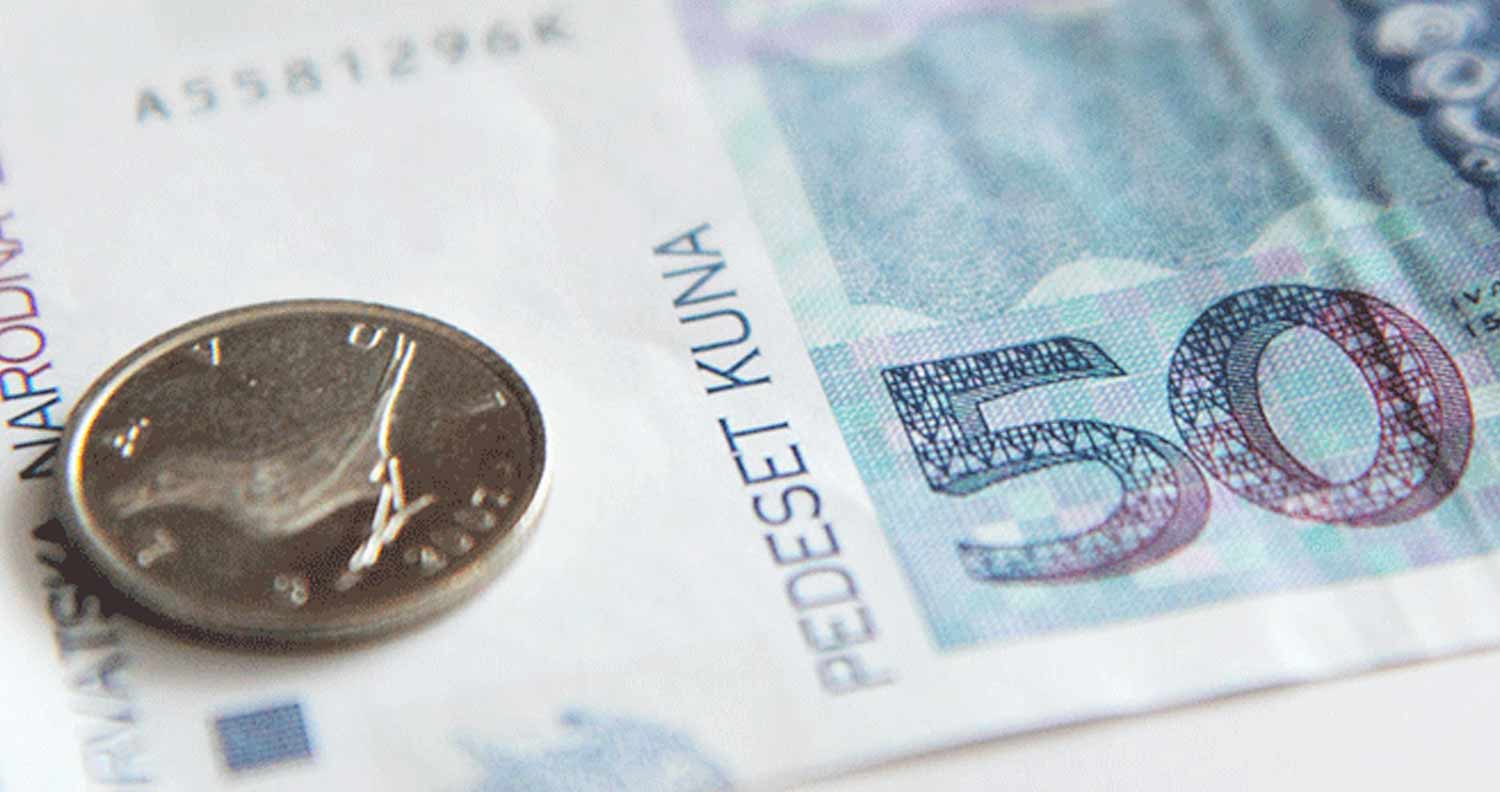
Read this next: Our How-To Guide for Tipping in Croatia
Tipping in Croatia
Depending on where you are coming from, tipping in Croatia may or may not seem like an expectation among customers to wait for staff.
Places like Tanzania in East Africa accept tips but do not expect them, whereas the United States wait staff survive off of tips.
In Germany, a 15-18% gratuity is added to the bill automatically, meaning you've already tipped, and other places see tips as disrespectful.
So where does Croatia stand?
The general rule of thumb in Croatia is that you simply round up the bill for standard service, and you add 10+% if the service is high.
The only time a tip is somewhat expected is in large groups, either on a tour or at a restaurant.
In these cases, one person will collect the tips and give them to the respective person (wait staff, driver, tour guide, etc.).
Again, while any amount is appreciated, the general rule is around 10+% of the individual's cost.
Croatia Travel Guide: Summary
There is a lot to love and a lot to see and a lot to do in Croatia.
Whether you are someone that loves spending time on the beach, enjoying the many islands, cycling through the many parks, enjoying the many foods, or just taking in the many things of the country, you will never be bored.
Whether you are thinking about coming, have already visited, or are only hearing about Croatia today, welcome! We know that, once you step foot in this incredible country, you won't really want to leave.

